Demin Water Tank Insulation
THE RESULT
We successfully provided insulation and cladding – to nuclear specification – and associated scaffolding services to two 45M³, 9-tonne, Demineralised (Demin) Water Tanks at our off-site facility. The project was completed on schedule and without a safety incident or accident.
Watch the Demin Water Tanks Powertherm Project video below…

THE CHALLENGE
Our client, Framatome needed a contractor who was competent in the provision of insulation and associated scaffolding services for two newly fabricated Demin Water Tanks. The tanks were due to be installed at a dockyard on the South Coast of England, so the project was required to be completed off-site beforehand. Operations at the dockyard include the construction and maintenance of nuclear-powered assets, consequently the insulation system and subsequent installation procedures needed to meet detailed quality control checks that are required under nuclear specifications.
PROJECT/ SITE DETAILS
- Industry: Marine (Nuclear)
- Contract Type: New Installation
- Services: Lifting logistics, Scaffolding Access, & Insulation
- Workforce: 4 Scaffolders & 4 Insulation Operatives/ Apprentices
- Project Duration: 3 weeks
- Location: The project was completed off-site at our Head Office, but the tanks were destined for a dockyard in the South of England.
- Site Type: Dockyard
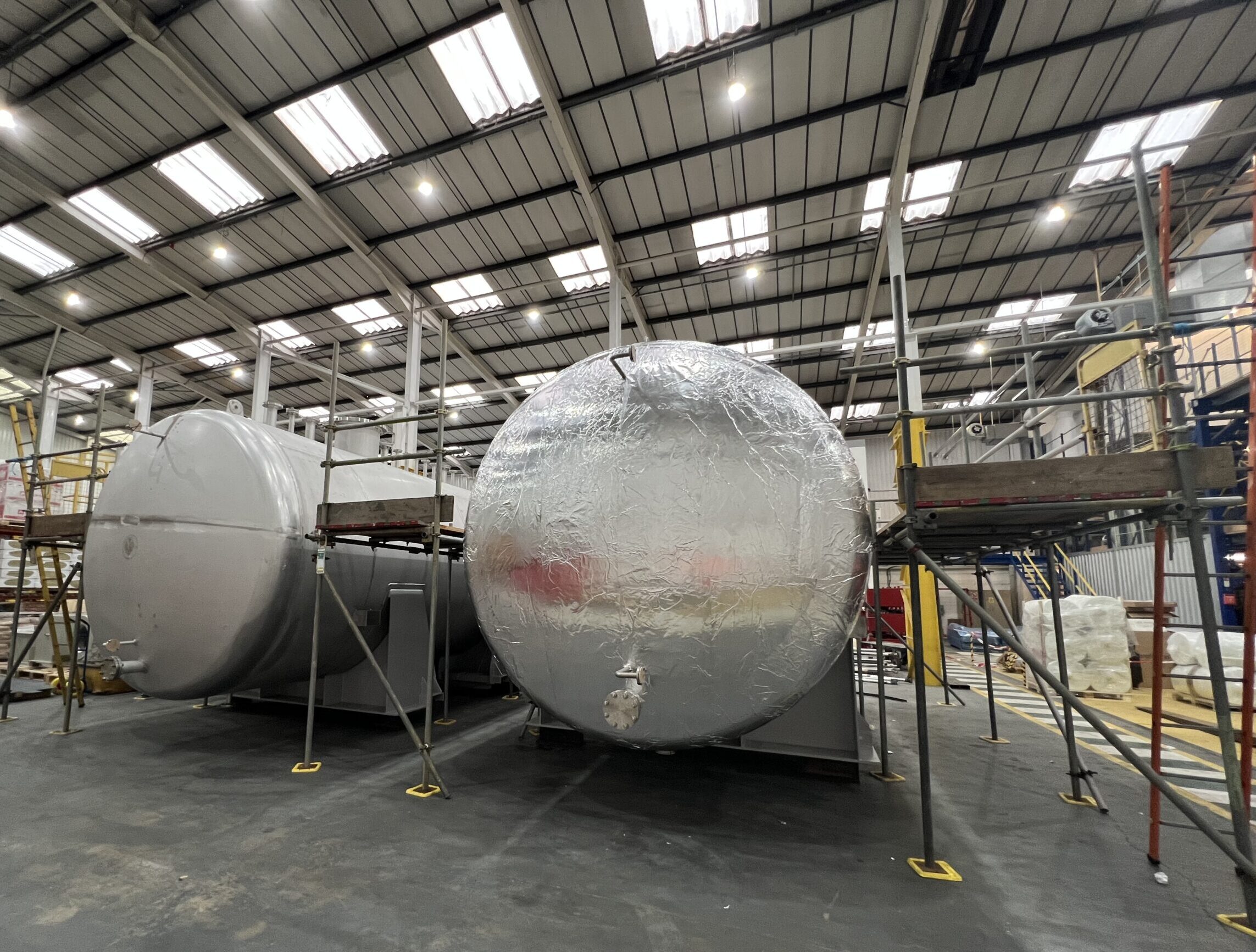
WHAT WE DELIVERED – SCOPE OF SERVICES
The first stage of the project was to get the 9 tonne tanks into our warehouse space. For this we brought in a specialist forklift that could handle the weight load.
The tanks then required a wash down to remove any surface contamination picked up during transit from the fabricator to our Head Office.
Scaffolding was erected by our scaffolding gangs in the form of independent scaffolds and edge protection to allow safe access to the top of the 45 M³ tanks ready for the installation of the insulation system.
MATERIAL SPECIFICATION
Insulation
- 100mm thick mineral wool slab for the body of the tanks
- 100mm thick mineral wool wired matt for the dome ends of the tanks
Cladding
- 1.0 mm stainless steel sheet – grade 316
Barrier
- 0.06mm aluminium foil
Substructure
- Bespoke bolted sub-structure to support the cladding
After a successful surface test by the end user for any contamination, our thermal insulation operatives & apprentices began by applying a layer of aluminium foiling to the surface of the tanks. The foil acts as a barrier to prevent stress corrosion cracking (SCC) as the tanks are manufactured from stainless steel.
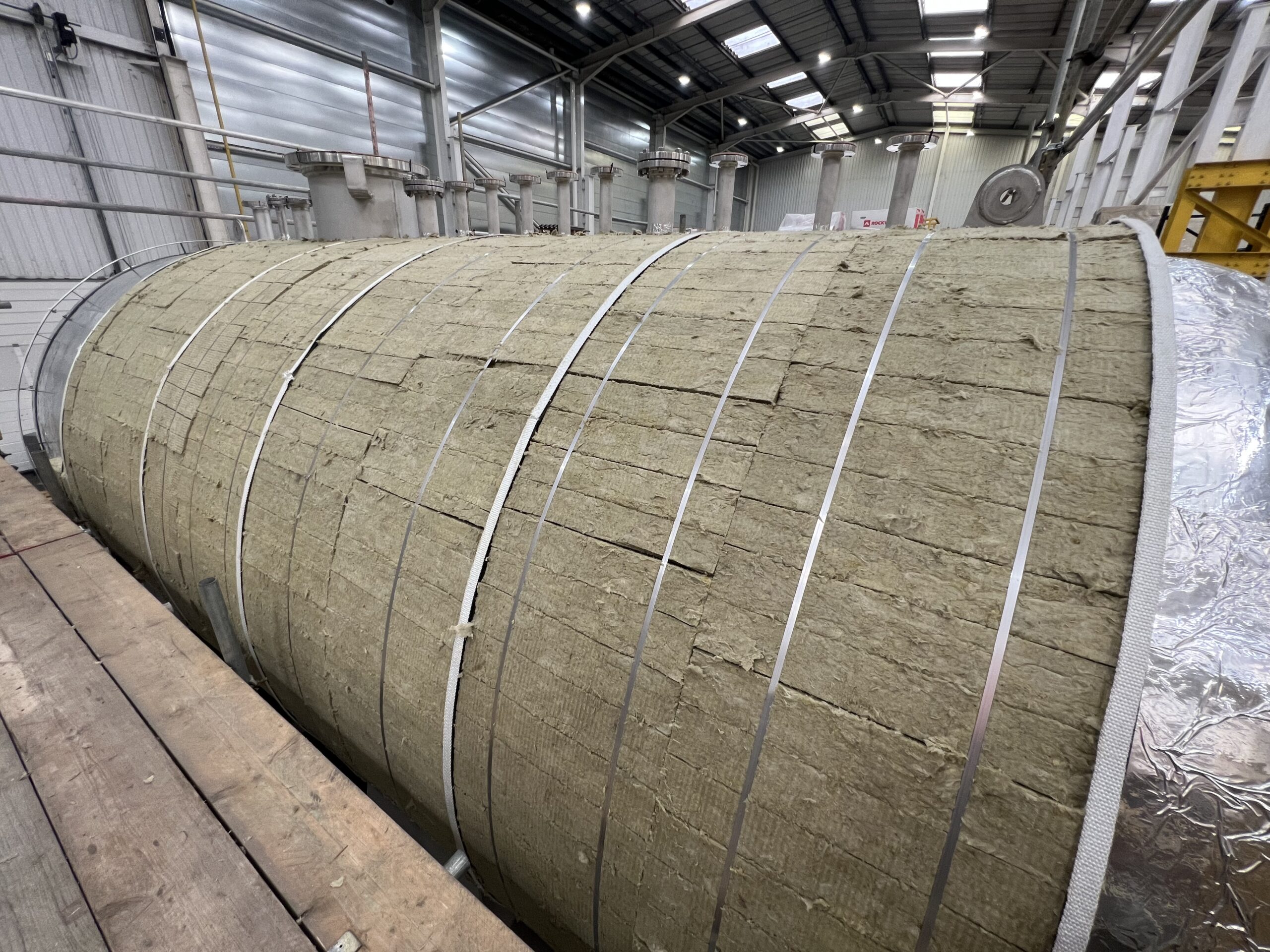

Next, a bespoke bolted substructure was applied to the body of the tanks. The substructure will support the protective cladding and help keep the insulation in place, along with metal banding.
100mm thick mineral wool slab was then installed by a team of thermal insulation operatives to the body of the tanks, before 1mm stainless steel sheet cladding was applied over the top. The dome ends were insulated with 100mm thick mineral wool wired matt.
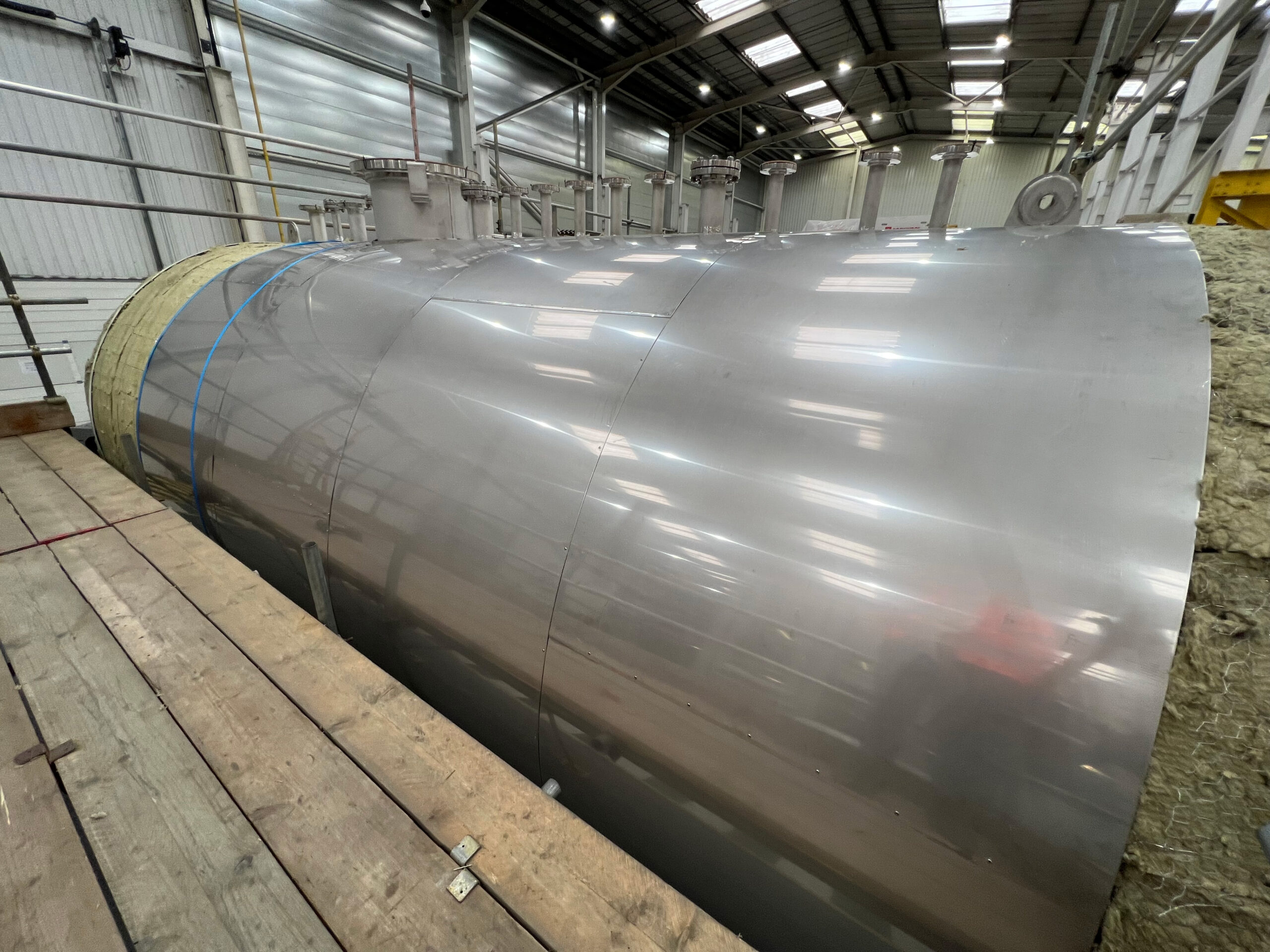
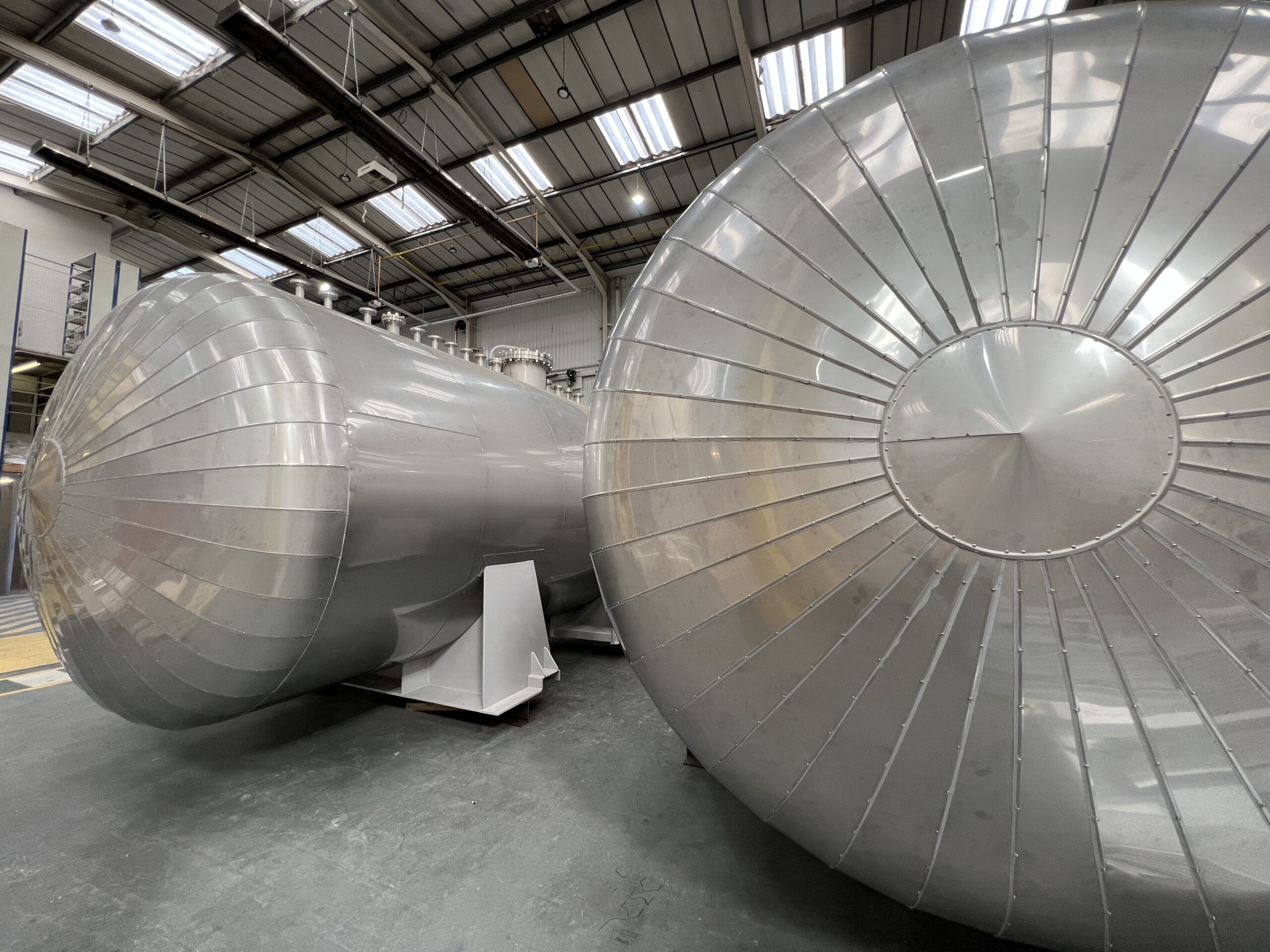
Protective cladding for the ø3m dome ends was fabricated from 1mm 316 SS sheeting and constructed from 38 individual petals to create the required bespoke dome shape. All sheet metal fabrications were manufactured in our state-of-the-heart fabrication facility.
To prevent water ingress all protrusions and flanges were finished with ‘picture frames/ inserts’ and mastic was applied along all the cladding seams.
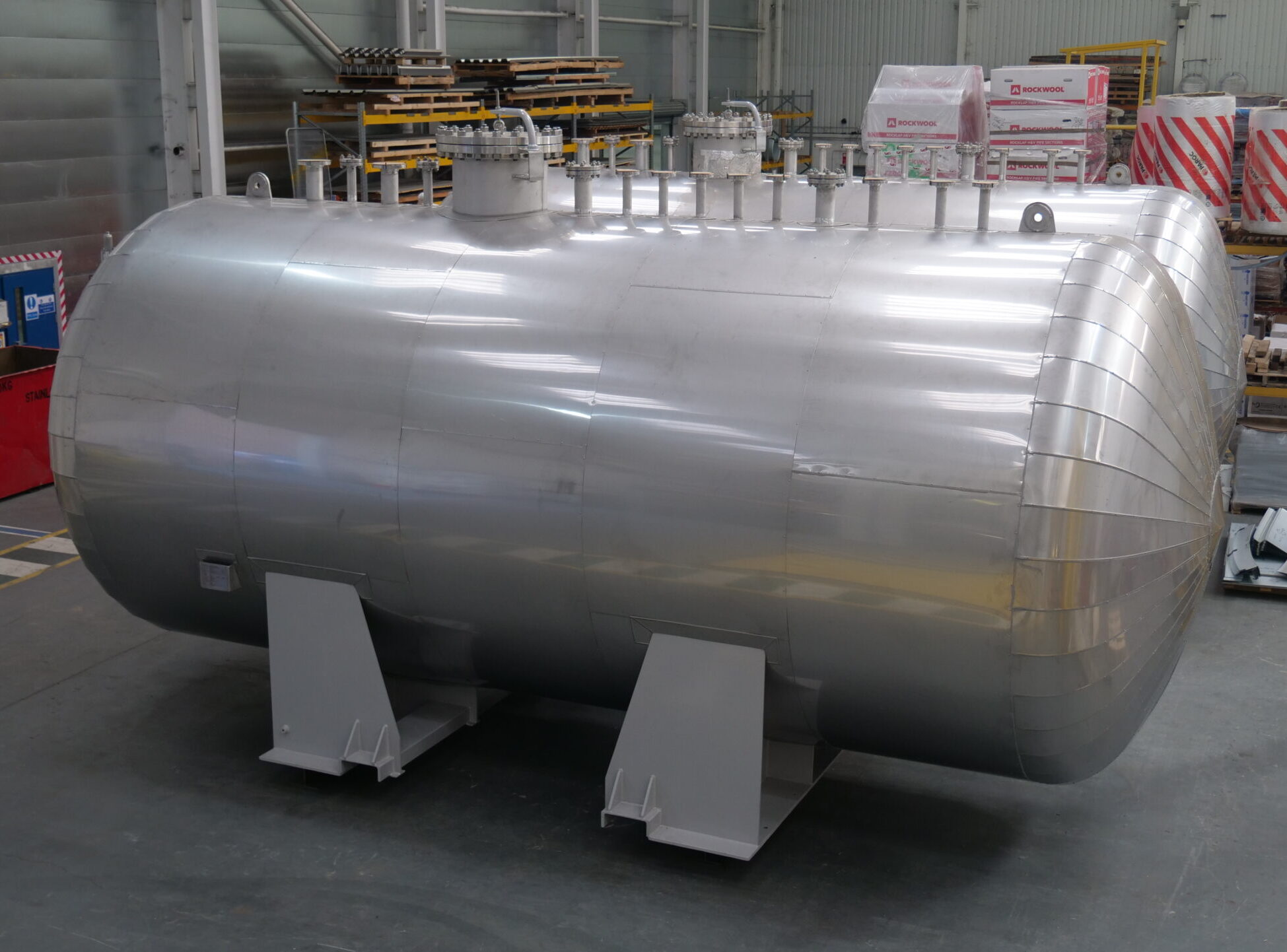
Finally, the tanks were cleaned, and scaffolding dismantled ahead of specialist lifting teams who lifted the tanks onto lorries to be delivered to the site in Plymouth, England.
Powertherm is the leading expert insulation company – it’s who we are, it’s what we do – learn more about our Industrial Insulation capabilities here >>.
Special thanks to all the Powerteam who contributed to the success of this Powertherm Project.
